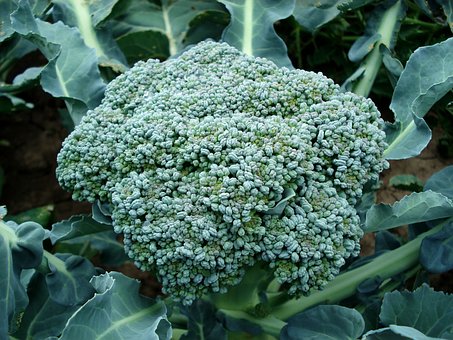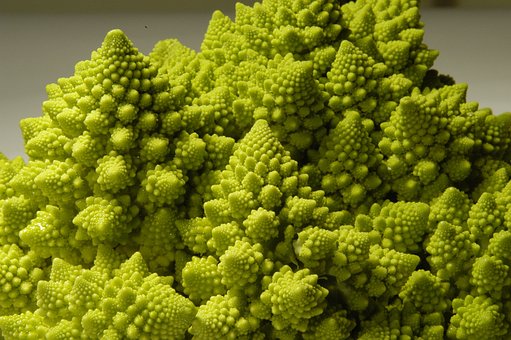Originally, was domesticated from wild cabbage in ancient Italy. It is a part of the brassica family, including cauliflower, cabbage, kale, kohlrabi, and Brussels sprouts. Like the artichoke, it is a flowering vegetable. The stalk is firmer than the flowers, and is commonly used in broccoli slaw, broccoli soups, pureed, or chopped into smaller pieces to be added to salads. There are different varieties of broccoli, from purple varieties to the beautiful cone shaped romanesco style, pictured above. Broccolini is a hybrid of kale and broccoli. Broccoli rabe is actually a member of the turnip family.
Broccoli is a good source of fiber and water. It has vitamins C, K1, and A, as well as folate (and other B vitamins), potassium, iron, manganese, and calcium. It provides around 2.5 grams of protein per pound. It has the distinct odor of sulfur, which promotes health, has antioxidants, and anticancer fighting properties. If one wants the most nutrition absorption from broccoli, steaming or quick stir frying is best. Adding some healthy fat to the vegetable will allow the body to absorb the nutritional components that much better. This rate of nutritional absorption is called bioavailability. The latest crop of broccoli popularity at the grocery stores is broccoli sprouts. They look like alfalfa sprouts. They are the 3-5 day old baby broccoli plants which are super nutritious. Broccoli, as well as all brassica plants provides us with great fiber for better elimination in the digestive system. If one has chronic constipation, try eating broccoli every day in many preparation forms and see the natural way to heal that issue.
How do you like to cook and eat your broccoli? I want to hear from you!
Blessings,
KJ Landis
SuperiorSelf channel on YouTube




 RSS Feed
RSS Feed